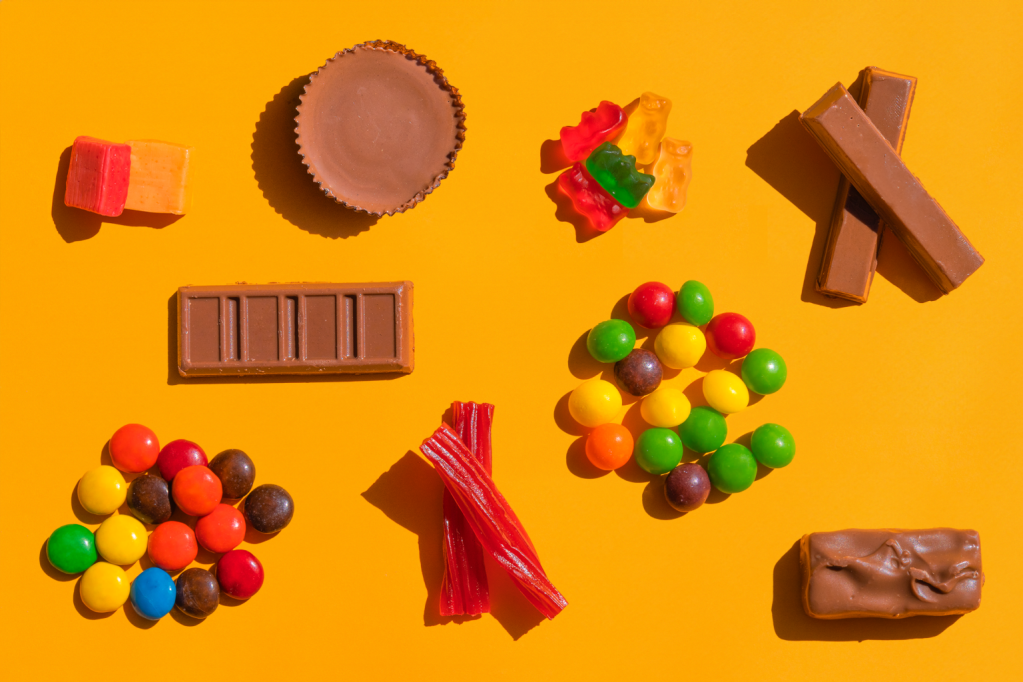Your cart is currently empty!
As your baby changes, so do their diet and nutrition needs. Here are some easy guidelines to help you understand and follow their baby food timeline!
Baby Food Timeline: What is Safe for Your Child to be Eating as They Develop?
Your baby works on their own timeline. The time babies move from breast milk to solid foods varies from baby to baby. Some kids grow faster than others, and some move a little slower. There is no right or wrong timeline, but there are some signs to look for and some tips to help you keep up with your little one’s diet.
This guide breaks down what your little one’s baby food timeline looks like from the first moments of breastfeeding or formula feeding to finger food snacks!
How Does a Baby Food Timeline Work?
When your baby is born, they aren’t ready for a ton of food.
Think of it this way: your baby’s tummy is like a small tank. It can’t hold much at all, so it’s vital to make sure the food that does go into this tank is packed with the nutrition your baby needs at every step of their development.
There’s a lot to consider when thinking about a baby food timeline for your babe. Here are some of the main components that make up this timeline.
Baby Food Stages
One of the most common ways to move from breast milk and introduce solid foods is by using baby food stages.
This is a way to gradually introduce different thickness levels, flavors, ingredients, and textures so you don’t overwhelm your little one or their tummy with new things. It also makes the baby food process gentle and gradual so your babe can get used to eating solids
Liquid Purees to Bite-Sized Snacks
The baby food stages begin with thin, single-ingredient, liquid purees that are gentle on your baby’s tummy while offering a variety of nutrition. Next are thicker purees that use multiple ingredients, and mashed foods that require a little bit of mushing and chewing. Your baby will eventually move on to chewier foods that require teeth and using their hands, which is a whole new world of fun.
Developmental Milestones
As your baby changes, so do their nutritional needs. For instance, when your baby is newly born, they don’t need much iron. In fact, they have iron stores in their bodies and use iron from breast milk that can last them up to six months. After this time, however, these stores begin to run out and they begin to need foods rich in iron.
This is just one example of how your babe’s nutrition needs change as they grow. There’s so much more to it, which is why we created the Yumi Milestone Plan.
Our nutritionists map out a menu for each stage of development from 4-6 months when your baby first begins solids to 2 years old when they are well on their way to eating like you. Learn more about our Milestone Plan here!

Sample Timeline
To understand how your baby’s eating timeline works, it helps to see how it’s laid out in real terms. Here’s a sample baby food timeline and how your little one will move from breast milk to handheld foods.
Breastfeeding or Formula
If you’ve never been in awe of the human body and what it can do, just do some research on breastfeeding. A mother’s breast milk provides all the nutrition a newborn baby needs until around six months.
This means for the first 6 months of a baby’s life, breast milk fuels all of their development and growth. Cognitive development, metabolic function, and immune system function are just a few of the important developmental milestones that happen during this time, and breast milk alone fuels all of it.
First Solids: Baby Food Purees
There are many advantages to breastfeeding during the first six months, but how do you know when your baby is ready to continue their baby food timeline and move on to solids?
Here are some of the signs:
- Your baby can hold their own head up and support themselves in an upright position, especially when in a chair.
- If your babe opens their mouth when food is near.
- If your babe is able to hold a spoon and move it to their mouth or move food onto their hand and toward their mouth, they’re ready for solids.
- It’s also important to make sure your little one weighs enough before you start solids. Babies typically weigh double their birth weight or more, so if your little one weighs less than this, it may be a good idea to wait.
Talk with your pediatrician if you aren’t sure when your baby is ready!
When your baby is ready to start solids, they will start with Stage 1 thinner baby food purees! This is the first step on the solid baby food timeline. The thinner purees are gentle on your baby’s tummy and help ease them into solid foods.
Thicker Combination Purees
The next stop on the baby food timeline: Stage 2 and Stage 3 baby food purees, which begins at 6 or 7n months and can last until 9 months. Stages 2 and 3 foods have a slightly thicker consistency to ease your baby into new textures. Stage 3 foods also have multiple ingredients for flavor combinations that are also packed with nutrients. Stages 4 and 5 also offer thicker foods with more ingredients.
These foods are an important part of the baby food timeline as they introduce both thicker textures and new flavors. This is essential to developing your baby’s palette which helps set the stage for future nutrition and avoid picky eating in the future!
Pinchable Finger Foods
At around 10 months, your little one can move on to the next part of their baby food timeline. This is when they can pick up food with their fingers to pinch and smash with their hands. Not only is this an interactive experience, but it helps develop your baby’s sense of touch!
Also rich in nutrients, these foods come in variety and prepare your baby for the next stage of eating which involves chewing and biting.
Bite-Sized Snacks
Your baby can continue to eat foods from different parts of the baby food timeline, but the last stop are snacks and finger foods. This stage occurs at 11 months! During this time your babe can have nutrient dense foods that require more chewing like our Veggie Meatball Bites, and snacks like our Cauliflower Puffs.

Baby Food Safety
As you learn more about what to feed your baby, it’s important to know what’s safe and what’s not. Here are some foods to avoid.
Avoid Sugar and Salt
Sugars and salts are often added to baby foods as preservatives to increase shelf life and preserve the appearance and flavor of foods.
However, these ingredients do more harm than good. Added sugars can result in unhealthy weight gain, dental decay, and set the stage for a lifetime of unhealthy eating! Learn more about why sugar is one food babies should always avoid here.
Added salts can also have a negative impact on your little one’s health. Excessive sodium intake can lead to high blood pressure, heart disease, stroke, and more. Your baby’s taste palette undergoes the most important development during the first 1,000 days of life. If your little one is eating baby foods with high levels of added sugars and sodium, their taste palettes will reflect this in later life.
By avoiding these ingredients, you can help set the stage for nutrition instead.
Avoid Heavily Processed Foods
Another factor important to the safety of baby food is whether or not it’s processed. Many baby foods undergo processes such as blasting foods at extreme temperatures to kill bacteria and extend shelf life. However, these processes can dull nutritional content and give your baby less nutrients in each bite.
Giving your baby unprocessed foods ensures they get more nutrients and safer foods!
Avoid Foods with Heavy Metals
Recent findings on heavy metals have shown dangerous amounts of cadmium, arsenic, lead, and mercury in baby food. These metals can get into baby food from water runoff and the cooking and cleaning process. Heavy metal exposure has been linked to severe health issues, especially as it concerns your little one’s developing brain.
To avoid heavy metals, we use trusted farms that are USDA certified organic and Non-GMO, follow rigorous food testing, soil test our farms to avoid contamination, choose ingredients that fight heavy metals, and we use light processing to avoid heavy metal contamination during the cooking process. We also test our food before we cook it and after we cook it.
Summary
As you learn your baby’s food timeline and what they should be eating as they grow, it’s important to remember that no baby is the same! Your little one grows and develops at their own rate, so it’s important to fuel this growth with nutrients, vitamins, and energy.
That’s why we made the Yumi Milestone Plan. Learn more about your baby’s milestone plan here!









